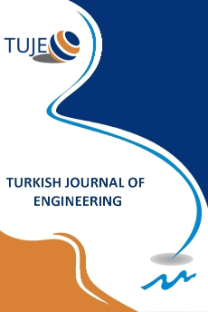AUTOMATIC DETECTION OF CYBERBULLYING IN FORMSPRING.ME, MYSPACE AND YOUTUBE SOCIAL NETWORKS
AUTOMATIC DETECTION OF CYBERBULLYING IN FORMSPRING.ME, MYSPACE AND YOUTUBE SOCIAL NETWORKS
___
- Al-garadi, M.A., Varathan, K.D. and Ravana, S.D. (2016). “Cybercrime detection in online communications: The experimental case of cyberbullying detection in the Twitter network” Computers in Human Behavior, Vol. 63, pp. 433–443.
- Andreou, E. (2004). “Bully/victim problems and their association with Machiavellianism and self-efficacy in Greek primary school children” British Journal of Educational Psychology, Vol. 74, No. 2, pp. 297–309.
- Bing Liu (2011). Web Data Mining: Exploring Hyperlinks, Contents, and Usage Data, 2nd Ed., Springer Publishing Company, Chicago, USA. Chakrabarti, S. (2003). Mining the Web : discovering knowledge from hypertext data, Morgan Kaufmann, San Francisco, USA.
- Dadvar, M. and Jong, F.M.G. de (2012). "Improved cyberbullying detection through personal profiles." International Conference on Cyberbullying, Paris, France.
- Dadvar, M., Jong, F.M.G. de, Ordelman, R.J.F. and Trieschnigg, R.B. (2012). “Improved cyberbullying detection using gender information” 12th Dutch-Belgian Information Retrieval Workshop, Ghent, Belgium, pp 1- 6.
- Dadvar, M., Trieschnigg, R.B. and Jong, F.M.G. de (2013). “Expert knowledge for automatic detection of bullies in social networks.” 25th Benelux Conference on Artificial Intelligence, Delft, Netherlands, pp. 1-7.
- Diamanduros, T., Downs, E. and Jenkins, S.J. (2008). “The role of school psychologists in the assessment, prevention, and intervention of cyberbullying” Psychology in the Schools, Vol. 45, No. 8, pp. 693–704.
- Dinakar, K., Reichart, R. and Lieberman, H. (2011). "Modeling the Detection of Textual Cyberbullying. The Social Mobile Web", 5th International AAAI Conference on Weblogs and Social Media, Barcelona, Catalonia, Spain.
- Eşsiz, E.S. (2016). Selecting Optimum Feature Subsets With Nature Inspired Algorithms for Cyberbully Detection, Çukurova University, Adana, Turkey. Gülgezen, G. (2009). Stable and Accurate Feature Selection, Istanbul Technical University, İstanbul, Turkey.
- Hanchuan Peng, H., Fuhui Long, F. and Ding, C. (2005). “Feature selection based on mutual information criteria of max-dependency, max-relevance, and min-redundancy” IEEE Transactions on Pattern Analysis and Machine Intelligence, Vol. 27, No. 8, pp. 1226–1238.
- Hinduja, S. and Patchin, J.W. (2008). “Cyberbullying: An Exploratory Analysis of Factors Related to Offending and Victimization” Deviant Behavior, Taylor & Francis Group, Vol. 29, No. 2, pp. 129–156.
- Kononenko, I. (1994). Estimating attributes: Analysis and extensions of RELIEF. European Conference on Machine Learning, Springer, Berlin, Heidelberg, pp. 171–182.
- Kontostathis, A. and Kontostathis, A. (2009). "ChatCoder: Toward the Tracking and Categorization of Internet Predators". 9th Siam International Conference on Data Mining, Nevada, USA.
- Kowalski, R.M., Limber, S.P. and McCord, A. (2018). “A developmental approach to cyberbullying: Prevalence and protective factors” Aggression and Violent Behavior, Vol. 45, pp. 20-32.
- Langos, C. (2012). “Cyberbullying: The Challenge to Define” Cyberpsychology, Behavior, and Social Networking, Vol. 15, No. 6, pp. 285–289.
- Li, T.B.Q. (2005). “Cyber-Harassment: A Study of a New Method for an Old Behavior” Journal of Educational Computing Research, Vol. 32, No. 3, pp. 265–277.
- McHugh, M.L. (2013). “The Chi-square test of independence” Biochemia Medica, Medicinska naklada, Vol. 23, No. 2, pp. 143–149.
- Nahar, V., Unankard, S., Li, X. and Pang, C. (2012). "Sentiment Analysis for Effective Detection of Cyber Bullying." 14th Asia-Pacific international conference on Web Technologies and Applications, Springer-Verlag, Beijing, China, pp. 767–774.
- Noviantho, Isa, S.M. and Ashianti, L. (2017). "Cyberbullying classification using text mining." 1st International Conference on Informatics and Computational Sciences, IEEE, Semarang, Indonesia, pp. 241–246.
- Ozel, S.A., Sarac, E., Akdemir, S. and Aksu, H. (2017). "Detection of cyberbullying on social media messages in Turkish." International Conference on Computer Science and Engineering, IEEE, Antalya, Turkey, pp. 366–370.
- Poland, S. (2010). “Cyberbullying Continues to Challenge Educators” District Administration, Vol. 46, No. 5, p. 55.
- Rosario, S.F. and Thangadurai, K. (2015). “RELIEF: Feature Selection Approach” International Journal of Innovative Research and Development, Vol. 4, No. 11.
- Snakenborg, J., Van Acker, R. and Gable, R.A. (2011). “Cyberbullying: Prevention and Intervention to Protect Our Children and Youth” Preventing School Failure, Vol. 55, No. 2, pp. 88–95.
- Urbanowicz, R.J., Meeker, M., LaCava, W., Olson, R.S. and Moore, J.H. (2017). “Relief-Based Feature Selection: Introduction and Review” Journal of Biomedical Informatics, Vol. 85, pp. 189-203.
- Wang, J., Shan, G., Duan, X. and Wen, B. (2011). "Improved SVM-RFE feature selection method for multiSVM classifier." International Conference on Electrical and Control Engineering, IEEE, Yichang, China, pp. 1592–1595.
- Wolak, J., Mitchell, K.J. and Finkelhor, D. (2007). “Does Online Harassment Constitute Bullying? An Exploration of Online Harassment by Known Peers and Online-Only Contacts” Journal of Adolescent Health, Vol. 41, No. 6, pp. S51–S58.
- Ybarra, M.L., Diener-West, M. and Leaf, P.J. (2007). “Examining the Overlap in Internet Harassment and School Bullying: Implications for School Intervention” Journal of Adolescent Health, Vol. 41, No. 6, pp. S42– S50.
- Yin, D., Xue, Z., Hong, L., Davison, B.D., Kontostathis, A. and Edwar, L. (2009). "Detection of Harassment on Web 2.0.", Content Analysis in the WEB 2.0, Madrid, Spain, pp. 1–7.
- ISSN: 2587-1366
- Yayın Aralığı: 4
- Başlangıç: 2017
- Yayıncı: Mersin Uüniversitesi
İlker Fatih KARA, Ashraf F. ASHOUR, Cahit BİLİM
BEHAVIOR OF R/C FRAMES WITH CONCRETE PLATE BONDED INFILLS
LOGIC THRESHOLD FOR MICRORING RESONATOR-BASED BDD CIRCUITS: PHYSICAL AND OPERATIONAL ANALYSES
AUTOMATIC DETECTION OF CYBERBULLYING IN FORMSPRING.ME, MYSPACE AND YOUTUBE SOCIAL NETWORKS
Eren Çürük, Çiğdem İnan Acı, Esra Saraç Eşsiz
